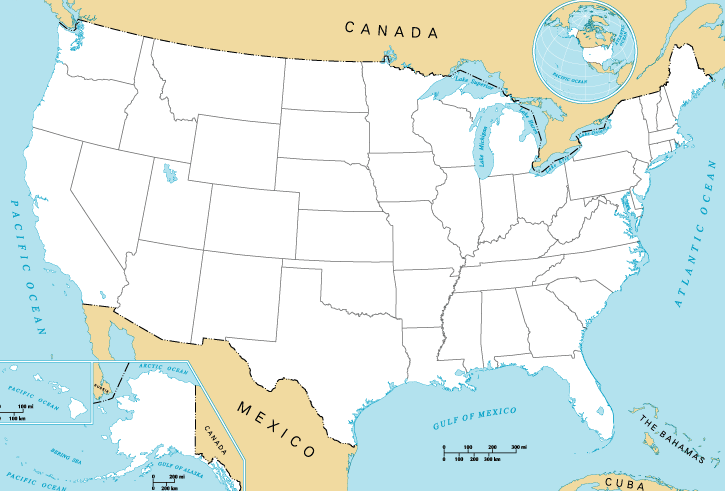|
International Registration Plan
The International Registration Plan (IRP) is a registration reciprocity agreement between the contiguous United States and Canadian provinces, which provides apportioned payments of registration fees, based on the total distance operated in participating jurisdictions, to them. IRP's fundamental principle is to promote and encourage the fullest possible use of the highway system. The benefit of this plan is that a carrier may be registered in only their home state, yet legally engage in interstate/interprovincial commerce. Each carrier vehicle only needs one specially marked "Apportioned", "APP", or "PRP" license plate, and a cab card which lists each jurisdiction the vehicle is valid to do business in and how much weight it is registered to carry. Two major transportation companies under IRP are U-Haul and Greyhound Lines. ''Apportionable Vehicles:'' any vehicle intended for use of transporting a person for hire or property, within the contiguous United States and/or Canadia ... [...More Info...] [...Related Items...] OR: [Wikipedia] [Google] [Baidu] |
Reciprocity (international Relations)
In international relations and treaties, the principle of reciprocity states that favors, benefits, or penalties that are granted by one state to the citizens or legal entities of another, should be returned in kind. For example, reciprocity has been used in the reduction of tariffs, the grant of copyrights to foreign authors, the mutual recognition and enforcement of judgments, and the relaxation of travel restrictions and visa requirements. The principle of reciprocity also governs agreements on extradition. Specific and diffuse reciprocity Several theorists have drawn a distinction between specific forms of reciprocity and "diffuse reciprocity" (Keohane 1986). While specific reciprocity is exemplified by international trade negotiations, as suggested above, diffuse reciprocity points to a wider institutionalisation of trust. Through consistent cooperation in an international society, states are seen as building generally accepted standards of behaviour. These general stand ... [...More Info...] [...Related Items...] OR: [Wikipedia] [Google] [Baidu] |
Contiguous United States
The contiguous United States (officially the conterminous United States) consists of the 48 adjoining U.S. states and the Federal District of the United States of America. The term excludes the only two non-contiguous states, Alaska and Hawaii (also the last ones admitted to the Union), and all other offshore insular areas, such as American Samoa, Guam, the Northern Mariana Islands, Puerto Rico, and the U.S. Virgin Islands. The colloquial term "Lower48" is used also, especially in relation to just Alaska (Hawaii is farther south). The related but distinct term continental United States includes Alaska (which is also on the continent of North America but separated from the 48 states by British Columbia and Yukon of Canada), but excludes the Hawaiian Islands and all U.S. territories in the Caribbean and the Pacific. The greatest distance (on a great-circle route) entirely within the contiguous U.S. is 2,802 miles (4,509 km), between Florida and the State of Washington; ... [...More Info...] [...Related Items...] OR: [Wikipedia] [Google] [Baidu] |
Canadian Provinces
Within the geographical areas of Canada, the ten provinces and three territories are sub-national administrative divisions under the jurisdiction of the Canadian Constitution. In the 1867 Canadian Confederation, three provinces of British North America—New Brunswick, Nova Scotia, and the Province of Canada (which upon Confederation was divided into Ontario and Quebec)—united to form a federation, becoming a fully independent country over the next century. Over its history, Canada's international borders have changed several times as it has added territories and provinces, making it the world's second-largest country by area. The major difference between a Canadian province and a territory is that provinces receive their power and authority from the ''Constitution Act, 1867'' (formerly called the ''British North America Act, 1867''), whereas territorial governments are creatures of statute with powers delegated to them by the Parliament of Canada. The powers flowing from th ... [...More Info...] [...Related Items...] OR: [Wikipedia] [Google] [Baidu] |
Jurisdiction
Jurisdiction (from Latin 'law' + 'declaration') is the legal term for the legal authority granted to a legal entity to enact justice. In federations like the United States, areas of jurisdiction apply to local, state, and federal levels. Jurisdiction draws its substance from international law, conflict of laws, constitutional law, and the powers of the executive and legislative branches of government to allocate resources to best serve the needs of society. International dimension Generally, international laws and treaties provide agreements which nations agree to be bound to. Such agreements are not always established or maintained. The exercise of extraterritorial jurisdiction by three principles outlined in the UN charter. These are equality of states, territorial sovereignty and non-intervention. This raises the question of when can many states prescribe or enforce jurisdiction. The ''Lotus'' case establishes two key rules to the prescription and enforcement of jur ... [...More Info...] [...Related Items...] OR: [Wikipedia] [Google] [Baidu] |
License Plate
A vehicle registration plate, also known as a number plate (British English), license plate (American English), or licence plate (Canadian English), is a metal or plastic plate attached to a motor vehicle or trailer for official identification purposes. All countries require registration plates for road vehicles such as cars, trucks, and motorcycles. Whether they are required for other vehicles, such as bicycles, boats, or tractors, may vary by jurisdiction. The registration identifier is a numeric or alphanumeric ID that uniquely identifies the vehicle or vehicle owner within the issuing region's vehicle register. In some countries, the identifier is unique within the entire country, while in others it is unique within a state or province. Whether the identifier is associated with a vehicle or a person also varies by issuing agency. There are also electronic license plates. Legal requirements In Europe, most governments require a registration plate to be attached to ... [...More Info...] [...Related Items...] OR: [Wikipedia] [Google] [Baidu] |
U-Haul
U-Haul is an American moving truck, trailer, and self-storage rental company, based in Phoenix, Arizona, that has been in operation since 1945. The company was founded by Leonard Shoen in Ridgefield, Washington, who began it in the garage owned by his wife's family, and expanded it through franchising with gas stations. Overview U-Haul is owned by U-Haul Holding Company, which in turn is owned by AMERCO, a publicly traded holding company which also operates: *Amerco Real Estate (which purchases existing buildings for conversion to self-storage facilities, existing self-storage facilities and bare land), *RepWest Insurance Company (which provides optional insurance for customers renting U-Haul vehicles and self-storage space), and *Oxford Life Insurance Company (which provides annuities, life insurance, and Medicare supplement insurance for senior adults). The Shoen family (heirs of founder Sam Shoen) currently owns, both directly and indirectly, about 55 percent of AMERC ... [...More Info...] [...Related Items...] OR: [Wikipedia] [Google] [Baidu] |
Greyhound Lines
Greyhound Lines, Inc. (commonly known as simply Greyhound) operates the largest intercity bus service in North America, including Greyhound Mexico. It also operates charter bus services, Amtrak Thruway services, commuter bus services, and package delivery services. Greyhound operates 1,700 coach buses produced mainly by Motor Coach Industries and Prevost serving 230 stations and 1,700 destinations. The company's first route began in Hibbing, Minnesota in 1914 and the company adopted the ''Greyhound'' name in 1929. The company is owned by Flix North America, Inc., an affiliate of Flixbus, and is based in Downtown Dallas. History 1914–1930: Early years In 1914, Eric Wickman, a 27-year old Swedish immigrant was laid off from his job as a drill operator at a mine in Alice, Minnesota. He became a Hupmobile salesman in Hibbing, Minnesota and, when he could not sell the first seven-passenger Hupmobile that he received, he began using it along with fellow Swedish im ... [...More Info...] [...Related Items...] OR: [Wikipedia] [Google] [Baidu] |
Axles
An axle or axletree is a central shaft for a rotating wheel or gear. On wheeled vehicles, the axle may be fixed to the wheels, rotating with them, or fixed to the vehicle, with the wheels rotating around the axle. In the former case, bearings or bushings are provided at the mounting points where the axle is supported. In the latter case, a bearing or bushing sits inside a central hole in the wheel to allow the wheel or gear to rotate around the axle. Sometimes, especially on bicycles, the latter type axle is referred to as a '' spindle''. Terminology On cars and trucks, several senses of the word ''axle'' occur in casual usage, referring to the shaft itself, its housing, or simply any transverse pair of wheels. Strictly speaking, a shaft which rotates with the wheel, being either bolted or splined in fixed relation to it, is called an ''axle'' or ''axle shaft''. However, in looser usage, an entire assembly including the surrounding axle housing (typically a casting) is ... [...More Info...] [...Related Items...] OR: [Wikipedia] [Google] [Baidu] |
Gross Vehicle Weight
Vehicle weight is a measurement of wheeled motor vehicles; either an actual measured weight of the vehicle under defined conditions or a gross weight rating for its weight carrying capacity. Curb or kerb weight Curb weight (U.S. English) or kerb weight (British English) is the total mass of a vehicle with standard equipment and all necessary operating consumables such as motor oil, transmission oil, brake fluid, coolant, air conditioning refrigerant, and sometimes a full tank of fuel, while not loaded with either passengers or cargo. The gross vehicle weight is larger and includes the maximum payload of passengers and cargo. This definition may differ from definitions used by governmental regulatory agencies or other organizations. For example, many European Union manufacturers include the weight of a driver and luggage to follow European Directive 95/48/EC. Organizations may also define curb weight with fixed levels of fuel and other variables to equalize the value for the c ... [...More Info...] [...Related Items...] OR: [Wikipedia] [Google] [Baidu] |
Gross Combined Weight Rating
Vehicle weight is a measurement of wheeled motor vehicles; either an actual measured weight of the vehicle under defined conditions or a gross weight rating for its weight carrying capacity. Curb or kerb weight Curb weight (U.S. English) or kerb weight (British English) is the total mass of a vehicle with standard equipment and all necessary operating consumables such as motor oil, transmission oil, brake fluid, coolant, air conditioning refrigerant, and sometimes a full tank of fuel, while not loaded with either passengers or cargo. The gross vehicle weight is larger and includes the maximum payload of passengers and cargo. This definition may differ from definitions used by governmental regulatory agencies or other organizations. For example, many European Union manufacturers include the weight of a driver and luggage to follow European Directive 95/48/EC. Organizations may also define curb weight with fixed levels of fuel and other variables to equalize the value for the comp ... [...More Info...] [...Related Items...] OR: [Wikipedia] [Google] [Baidu] |
Canadian Transport Law
Canadians (french: Canadiens) are people identified with the country of Canada. This connection may be residential, legal, historical or cultural. For most Canadians, many (or all) of these connections exist and are collectively the source of their being ''Canadian''. Canada is a multilingual and multicultural society home to people of groups of many different ethnic, religious, and national origins, with the majority of the population made up of Old World immigrants and their descendants. Following the initial period of French and then the much larger British colonization, different waves (or peaks) of immigration and settlement of non-indigenous peoples took place over the course of nearly two centuries and continue today. Elements of Indigenous, French, British, and more recent immigrant customs, languages, and religions have combined to form the culture of Canada, and thus a Canadian identity. Canada has also been strongly influenced by its linguistic, geographic, and e ... [...More Info...] [...Related Items...] OR: [Wikipedia] [Google] [Baidu] |



.jpg)
